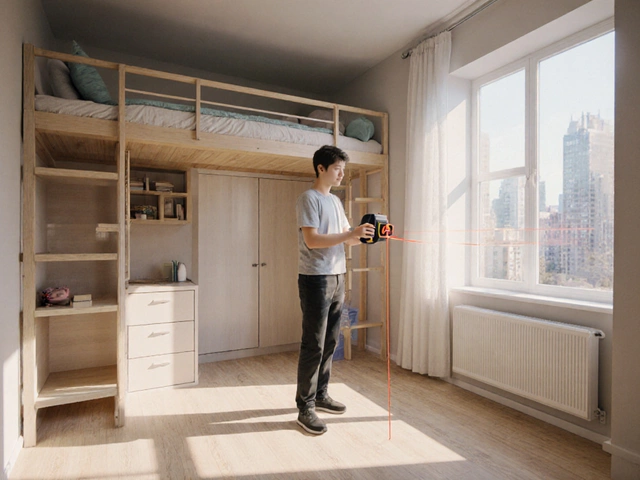Section 8 Income Limits & Maximum Rent: How Much Can You Earn?

Section 8 Income & Rent Calculator
Your Section 8 Limits
Maximum Annual Income:
Maximum Monthly Income:
Maximum Rent (with 100% Payment Standard):
Tenant Share (30% of Adjusted Gross Income):
Note: If rent exceeds the payment standard, you must cover the difference.
When talking about public housing assistance in the United States, Section 8 is a HUD‑run program that provides rental vouchers to low‑income households, letting them pay a portion of rent while the government covers the rest. Understanding the ceiling-how much a household can earn and still qualify, and how high a landlord can charge-requires a quick tour of income limits, payment standards, and local variations.
How Section 8 Determines Eligibility
The core rule is simple: a family’s gross annual income must fall at or below a percentage of the area’s median income (AMI). HUD publishes AMI figures for each metropolitan area and updates them yearly. Most public housing authorities (PHAs) set the cutoff at 50% of AMI for regular vouchers, though some jurisdictions use 30% of AMI for extremely low‑income families.
- Example: In 2025 the AMI for a two‑person household in Dallas‑Fort Worth is $84,600. At the 50% threshold, the maximum qualifying income is $42,300 per year, or $3,525 per month.
- If a PHA adopts the 30% rule, the limit drops to $25,380 annually ($2,115 monthly).
These numbers are the highest you can "make"-any income above the limit disqualifies you from receiving a voucher.
What the Voucher Actually Pays
The voucher doesn’t pay the full rent. Instead, the tenant is expected to contribute roughly 30% of their adjusted gross income, and the PHA covers the rest, up to the local payment standard.
Adjusted gross income (AGI) subtracts certain deductions like child support, spousal support, and allowances for dependents. The tenant’s share is calculated as:
- Take the AGI.
- Multiply by 30%.
- Result is the tenant’s monthly contribution.
The PHA then looks at the rent amount for the chosen unit. If the rent is lower than the payment standard, the PHA pays the difference. If the rent exceeds the standard, the tenant must pay the excess, which often pushes the total tenant share above the 30% guideline. In that case the PHA may deny the unit.
Understanding Payment Standards
Payment standards are the maximum subsidy amount a PHA will pay for a given unit size. They are set as a percentage of the Fair Market Rent (FMR) published by HUD-typically 90% to 110% of FMR, depending on local housing costs.
For example, the 2025 FMR for a two‑bedroom apartment in Phoenix is $1,550. If the local PHA uses a 100% payment standard, the highest subsidy it will provide is $1,550. If the landlord charges $1,800, the tenant must cover the $250 gap on top of their 30% share.
Thus, the highest rent a landlord can charge and still receive full voucher payment is essentially the payment standard for that unit size. Anything above that reduces the voucher’s effectiveness.
Local Variations Matter
Because AMI and FMR differ across counties and even neighborhoods, the "highest you can make" and the "maximum rent" vary dramatically. Here are three contrasting markets:
| Metro Area | 2‑Person AMI | 50% Income Limit | 2‑Bedroom FMR | Payment Standard (100% FMR) |
|---|---|---|---|---|
| Seattle, WA | $107,300 | $53,650 / yr ($4,471 / mo) | $2,060 | $2,060 |
| Dallas‑Fort Worth, TX | $84,600 | $42,300 / yr ($3,525 / mo) | $1,380 | $1,380 |
| Rural Mississippi | $52,800 | $26,400 / yr ($2,200 / mo) | $760 | $760 |
Notice how the income ceiling and the maximum rent align with local cost levels. Prospective tenants should always check the specific PHA’s website for the most recent charts.

Key Pitfalls to Avoid
- Assuming the voucher covers all rent. It caps at the payment standard; any excess falls to the tenant.
- Overlooking deductions. Not accounting for allowable deductions can artificially lower the income limit, causing a qualified family to be denied.
- Ignoring portability. Vouchers can be transferred across PHAs, but each new PHA may have different income limits and payment standards.
- Missing the annual recertification. Income limits are re‑evaluated each year; a household that barely qualified last year might be over the limit this year.
Steps to Find Your Local Maximum
- Identify your county or metropolitan area.
- Visit the local PHA’s website (search “your city public housing authority”).
- Locate the 2025 AMI table and note the figure for your household size.
- Calculate 50% (or 30% if applicable) of that AMI to get the income ceiling.
- Find the Fair Market Rent chart for your area and unit size.
- Check the payment standard percentage the PHA uses (usually listed alongside the FMR).
- Multiply the FMR by that percentage to get the highest rent the voucher will fully cover.
Follow these steps and you’ll know exactly how much you can earn and what rent level a voucher will support.
Frequently Asked Questions
What does “Section8” actually refer to?
Section8 is the informal name for the Housing Choice Voucher program run by the U.S. Department of Housing and Urban Development (HUD). It gives eligible households a subsidy that they can use to rent privately owned housing.
How is the income limit calculated?
HUD publishes Area Median Income (AMI) figures each year. Most PHAs set the Section8 eligibility ceiling at 50% of the AMI for the household size. Some use 30% for extremely low‑income families. Multiply the AMI by the chosen percentage to get the maximum annual income.
Can a landlord charge more than the payment standard?
Yes, but any amount above the payment standard becomes the tenant’s responsibility. If that extra pushes the tenant’s total share above 30% of their adjusted income, the PHA may refuse to approve the unit.
What is Fair Market Rent (FMR) and why does it matter?
FMR is HUD’s estimate of the 40th‑percentile rent for a typical unit in a given area. PHAs base their payment standards on a percentage of the FMR, so the FMR directly caps the maximum subsidy a voucher can provide.
Do income limits change each year?
Yes. HUD updates AMI and FMR data annually, and PHAs recalculate eligibility limits and payment standards accordingly. Families must recertify their income each year.









Write a comment